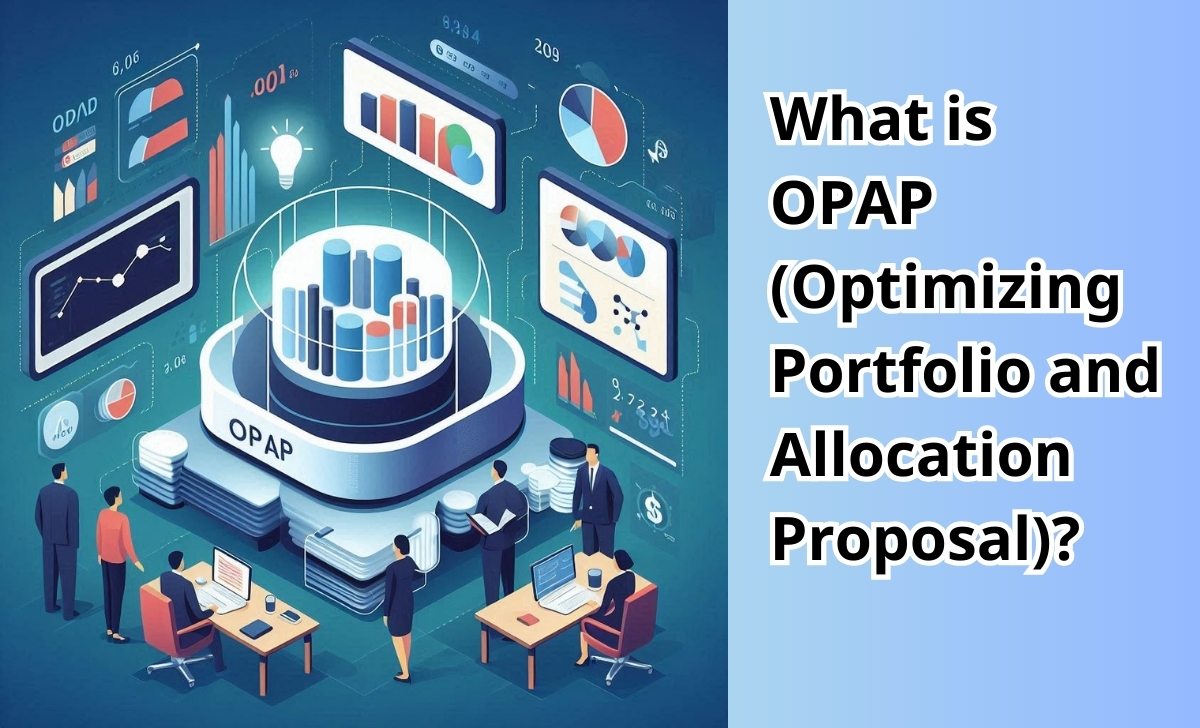OPAP (Optimizing Portfolio and Allocation Proposal) is a scientific method used to analyze and build the most efficient investment portfolio. Through OPAP, investors can make informed decisions and maximize their returns.
So, what exactly is OPAP, and how does it work? Let’s explore this in detail with AZCoin in this article!
What is OPAP (Optimizing Portfolio and Allocation Proposal)?

OPAP (Optimizing Portfolio and Allocation Proposal) is a portfolio optimization tool designed to help investors make smart and effective asset allocation decisions. OPAP utilizes complex algorithms and market data to analyze an investor’s current portfolio and then suggests optimal allocations to achieve their financial goals.
Optimizing a portfolio through OPAP not only helps maximize returns but also minimizes risks by reasonably allocating assets across different investment categories. This is particularly crucial in volatile markets, where investment decisions need to be based on accurate data and analysis.
How OPAP works on the StakeStone platform
StakeStone is a pioneering financial platform offering OPAP solutions to investors. OPAP on StakeStone operates by using market data, risk analysis models, and optimization algorithms to provide the best asset allocation recommendations.
The process begins with collecting and analyzing data related to the user’s current portfolio, including information on stocks, bonds, cryptocurrencies, and other assets. OPAP then generates asset allocation scenarios based on the investor’s financial goals and risk tolerance.
OPAP’s recommendations go beyond simple asset allocation; they also provide suggestions for portfolio adjustments over time to ensure that the portfolio remains aligned with current market conditions and the investor’s objectives.
Benefits of OPAP for investors

OPAP offers several benefits for investors, including:
- Maximizing Returns: By utilizing optimization algorithms, OPAP helps investors make asset allocation decisions aimed at maximizing returns.
- Risk Minimization: OPAP focuses not only on returns but also on reasonable risk distribution, helping investors protect their assets from unforeseen market fluctuations.
- Personalized Portfolio: OPAP allows investors to customize asset allocation recommendations based on their goals and risk tolerance, creating a portfolio that best suits their needs.
- Flexible Monitoring and Adjustment: With OPAP, investors can easily track portfolio performance and make timely adjustments based on recommendations from the StakeStone platform.
In addition to learning about OPAP, you should also explore related concepts such as What is an Omnichain Fungible Token (OFT), What is Ethereum staking,…
Factors to consider when using StakeStone’s OPAP
While OPAP provides numerous benefits, investors should also consider certain factors when using this tool:
- Risk Tolerance: Each investor has a different risk tolerance level. This should be carefully considered when using OPAP to ensure that asset allocation recommendations align with individual risk appetites.
- Market Conditions: Financial markets are always fluctuating, and OPAP’s recommendations can be influenced by these rapid changes. Investors need to regularly monitor and update their portfolios.
- Costs and Management Fees: Some platforms may charge fees for using portfolio optimization services. Investors should carefully consider these costs before making a decision.
Challenges and solutions when using OPAP

Although OPAP is a powerful tool, using it isn’t always straightforward. Here are some challenges investors may face and how to address them:
- Market Instability: During periods of significant market volatility, OPAP’s recommendations may not be as effective as expected. Investors should have contingency strategies and not rely solely on automated suggestions.
- Incomplete or Outdated Data: OPAP’s effectiveness heavily depends on the quality and accuracy of data. Therefore, investors should ensure that data is continuously updated and reliable. For safe investing, refer to our list of the best crypto exchanges 2024.
- Lack of Portfolio Management Experience: For new investors, using OPAP may be challenging due to a lack of experience in portfolio management. In such cases, they should seek advice from experts or utilize support services from StakeStone.
How to use OPAP on StakeStone

To start using OPAP on the StakeStone platform, follow these steps:
- Register and Access the StakeStone Platform: Visit StakeStone’s website and create an account. Once registered, you can access the platform and explore OPAP’s features.
- Input Your Investment Information and Goals: Provide information related to your current portfolio and financial goals, including your risk tolerance and expected investment timeframe.
- Review and Analyze OPAP’s Recommendations: OPAP will analyze your data and offer optimal asset allocation recommendations. You can review and adjust these recommendations based on your personal goals.
- Implement and Monitor Your Portfolio Based on OPAP’s Suggestions: After accepting OPAP’s recommendations, you can execute transactions to adjust your portfolio. StakeStone provides tools to monitor performance and make necessary adjustments.
Tips and suggestions to maximize OPAP’s benefits
- Regularly update your financial information and investment goals on StakeStone to ensure that OPAP’s recommendations remain relevant.
- Combine OPAP with other investment strategies to create a diversified and balanced portfolio.
- Continuously monitor and evaluate your portfolio’s performance to make timely adjustments when needed.
Conclusion
In summary, OPAP (Optimizing Portfolio and Allocation Proposal) is a valuable tool that helps investors optimize their portfolios. AZcoin hopes this article has provided you with a clearer understanding of OPAP and that you can apply it today to start your journey toward smart investing!

I am Louis Dang, living in Ottawa, Canada. I am currently working as a trader for AZCoin company, with 7 years of experience in the cryptocurrency market, I hope to bring you useful information and knowledge about virtual currency investment.











